I was looking around at some very cool blogs the other night and found one that was so much fun. Why? Because everything was in rhyme! You've got to go see! http://rhymetime24.blogspot.com/
To me rhyming is playing with words at it's finest. At rhymetime, people just comment in rhyme. That seems simple enough so here you go:
The dishes are sitting
in my kitchen sink
and I'm up here blogging
so what do you think?
Should I become slave
to the dishes at hand
or should I keep on blogging
just because that I can!
Please leave me a comment
and put it in rhyme
we'll try it tonight
and again down the line!
PS Comments can be as short as two words!
Viewing: Blog Posts Tagged with: rhyming, Most Recent at Top [Help]
Results 26 - 50 of 119
Blog: Jan Mader Ignite to Write (Login to Add to MyJacketFlap)
JacketFlap tags: rhyming, play with words, Add a tag
Blog: Shelf-employed (Login to Add to MyJacketFlap)
JacketFlap tags: poetry, rhyming, book review, beach, storytime, E, Add a tag
 |
| A preview available at the publisher's site |
With a rhyming, smooth-flowing pattern in which the 2nd and 6th lines repeat, Fineman catches the very essence of summer boardwalk activity along the Eastern seaboard.
At the boardwalkFood, rides, arcades, and fireworks; in rain and fog and sun - she captures it all - right down to the oompah music of the carousel and the stands selling hermit crabs. Each 6-line verse appears on a two-page spread in which Spanish illustrator, Mónica Armiño, uses pencils and mixed media on textured paper to create a light-hearted, multicultural tableau of the best the boardwalk has to offer. The final image is that of a lone worker sweeping the sand from an empty boardwalk that stretches away into the distance toward a darkened Ferris wheel. To the East, the ocean is calm. The sky is darkening and a full moon is high in the sky.
day or night
Treats for every appetite
Popcorn - taffy - fudge, delight
At the boardwalk
day or night
Oh, would that summer would never end!
I love this one!
In checking, I find that, of course, Kelly Ramsdell Fineman is from New Jersey. I'd be willing to bet that she's been to my stretch of paradise. (I'd love to know how an artist from Madrid got it so right.)
We'd like to keep it a secret, but this is the real Jersey Shore.
Blog: Shelf-employed (Login to Add to MyJacketFlap)
JacketFlap tags: history, poetry, rhyming, book review, science, space, moon, storytime, astronauts, E, space travel, Add a tag
McReynolds, Linda. 2012. Eight Days Gone. Illustrated by Ryan O'Rourke. Watertown, MA: Charlesbridge.
In simple, four-line rhymes, Linda McReynolds has captured for a new generation the eight breathtaking, breath-holding days of the Apollo 11 mission. Eight Days Gone recounts the July 1969, launch, orbit, landing and return of the spaceship Columbia and the lunar module Eagle.
It begins on a cheerful, sunny, colorful day in Florida,
Hundreds gather.McReynolds skillfully distills this immense project, this watershed accomplishment into its most basic elements, yet she disregards no aspect of the mission, giving recognition to Aldrin and Armstrong, the nation, the command center, Collins (who stayed aboard the Columbia), even the Navy - remember the days of "splashdowns?"
Hot July.
Spaceship ready -
set to fly.
Most striking is the painting of the "earthrise" on the black lunar horizon, a small astronaut placed in the lower left corner,
Desolation.Our tiny place within the cosmos is illustrated, but is boldly followed by the illustration on the following page where the astronaut fills a third of the page, confidently setting forth across the lunar landscape,
Silent. Dark.
Tranquil sea.
Barren. Stark.
Haul equipment.May we always be reminded of both our infinetesimal status and our immense capacity to overcome it. A stunning book. Highly recommended.
Careful test.
Exploration.
Lunar quest.
A photo, bilbiography, author's note and websites are included.
This is Linda McReynolds' first children's book.
Other Eight Days Gone reviews @
NASA offers a K-4 student website as well as a 4 Comments on Eight Days Gone - a review, last added: 7/23/2012
Blog: Tara Lazar (Login to Add to MyJacketFlap)
JacketFlap tags: Ollie and Claire, The Monster Who Lost His Mean, Tiffany Strelitz Haber, Contest, rhyming, Picture Books, rhyme, Author Interview, Writing for Children, Giveaway, writing in rhyme, Add a tag
OK, so you know that I love monsters. Can’t get enough of them. Well, my friend Tiffany Strelitz Haber is here today with a monster of a story—her debut picture book, THE MONSTER WHO LOST HIS MEAN!
Some of you may know Tiffany as one of the two rhyming geniuses behind The Meter Maids (with Corey Rosen Schwartz). If you don’t, you have to check out her site, which is all about writing in rhyme. Don’t make me slap you with a citation!
Before we get riffing with Tiffing (yeah I can call her that, it rhymes), you MUST take a look at the extraordinary trailer for her new book. The music, the animation—it’s all so monstrous and so much fun!

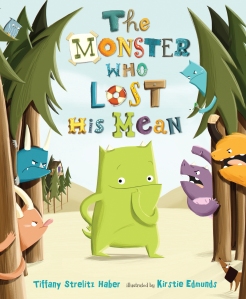 TL: THE MONSTER WHO LOST HIS MEAN is about a monster who loses his ‘M’. You know I host Picture Book Idea Month every November so I’m obsessed with the origin of ideas. Where did this idea come from?
TL: THE MONSTER WHO LOST HIS MEAN is about a monster who loses his ‘M’. You know I host Picture Book Idea Month every November so I’m obsessed with the origin of ideas. Where did this idea come from?
TSH: I have always been a very visual person when it comes to words. Even as a kid, I loved the concept of homonyms, acrostics, acronyms, spelling words backwards, and even looking at them upside down. One day I started thinking about the letters in the word MONSTER, and what they might actually stand for if the word MONSTER was an acronym. From there the concept just grew and evolved, and “The Onster” was born!
TL: We’re also all about characters names on this blog. Did “The Onster” have a name before he lost his M?
TSH: Ya know…that’s a great question. I like to think that he only really found any identity at all after he lost his M. Before that he was just…well… generic, nameless, and not nearly as cool—Monster. Bleh.
TL: The Onster cooks brunch at one point in the book. I’m a foodie like you, so what’s your favorite brunch food?
TSH: Hmm…for me, picking a favorite food is kind of like bending a spoon into a perfect figure eight using just my toes (almost impossible). But in the interest of quasi-decisiveness…I’ll go with a tie. EITHER: Perfectly toasted onion bagels slathered in whipped cream cheese, lox and just a few rounds of raw, red onion…OR…a dim sum extravaganza.
So…What’s YOUR favorite brunch food? Tell us and be entered to win a signed ARC of THE MONSTER WHO LOST HIS MEAN!
You get one entry for commenting and then one entry for every place you share—blog, Facebook, Twitter, Pinterest, etc. Just let us know where you ONSTER’ed!
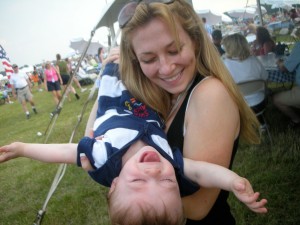 Tiffany Strelitz Haber is the author of two rhyming picture books: THE MONSTER WHO LOST HIS MEAN (Henry Holt Books for Young Readers, July 17, 2012) and OLLIE AND CLAIRE (Philomel/Penguin, 2013). She will eat any food she is served, be it fried witchetty grubs on a stick or calf’s brain ravioli, and loves to be high in the air or deep in the sea. T
Tiffany Strelitz Haber is the author of two rhyming picture books: THE MONSTER WHO LOST HIS MEAN (Henry Holt Books for Young Readers, July 17, 2012) and OLLIE AND CLAIRE (Philomel/Penguin, 2013). She will eat any food she is served, be it fried witchetty grubs on a stick or calf’s brain ravioli, and loves to be high in the air or deep in the sea. T
Blog: A Year of Reading (Login to Add to MyJacketFlap)
JacketFlap tags: food, picture book, rhyming, Science, word study, chant, Add a tag
As with Rah, Rah, Radishes!, Go, Go, Grapes! features vivid photos from farmer's markets and groceries around Ohio and Indiana, along with some guest appearances from a Vietnamese farmer's market in New Orleans for some of the most exotic fruits.
Word study? Check out these JUICY words!
Science? Use this book with your plant unit!
Writing workshop? Go gather up a collection of words on a topic and try writing your own chant!
Blog: Shelf-employed (Login to Add to MyJacketFlap)
JacketFlap tags: sailors, fire fighting, rhyming, book review, cats, ballet, toddlers, socks, boats, storytime, bilingual, ducks, E, Add a tag
So many great picture books have passed my desk lately. Here are a few:
- Joose, Barbara. 2012. Old Robert and the Sea-Silly Cats. Ill. by Jan Jutte. New York: Philomel.
Each night, Old Robert counts "his regular things in their regular place"
Clean socksThings are always the same until the night a cat asks to come in. There was no room for a cat on Old Robert's boat,
a clock
my ship in the slip at the dock.
One dish
one spoon
a slice of the silver moon.
And yet ...This is a delightfully, quirky story about Old Robert, his boat, and how one small decision can change a life (or two, or three, or ...). Illustrations by the Netherlands' Jan Jutte, give Old Robert and the Sea-Silly Cats a salty and silly air reminiscent of old comics (think Popeye or original Tin Tin) touched with whimsy. Comforting, repetitive refrains make this a great read aloud.
and yet ...
Old Robert said yes ...
... and the cat came in.
There is just something irresistible about Old Robert and the Sea-Silly Cats.
And there's apparently a song available, too, "Old Roberts Jig" by the Happy Racers.
- Elya, Susan Middleton. 2012. Fire! ¡Fuego! Brave Bomberos. Ill. by Dan Santat. New York: Bloomsbury.
My husband has had a long and wonderful career in the fire department, so I'll admit some partiality to firefighter books, even ones that feature firefighters rescuing cats from trees. For the record, professional firefighters don't rescue cats from trees. They will, however, rescue animals from fires, and in Fire! ¡Fuego! Brave Bomberos, a house fire traps a poor kitty on an upper floor,
Climbing up la escalera,See how easy that was? You're speaking Spanish. Even without the brightly colored double spread illustration of a firefighter on a ladder, hand extended with cat treats, you knew what it meant, and kids will too! The story rhymes, the meter's fine, and if you need help with pronunciation, it's all in the Glossary. All bias aside, I like it!
KITTY, KITTY,
COME AFUERA.
Coaxed by food in small pedazos,
kitten jumps to outstretched brazos.
- Kohuth, Jane. 2012. Duck Sock Hop. Ill. by Jane Porter. New York: Pen
2 Comments on Picture Book Roundup - May edition, last added: 5/31/2012Display Comments Add a Comment
Blog: HOOK KIDS on READING (Login to Add to MyJacketFlap)
JacketFlap tags: Margot Finke, Books for kids, GAP, Aussie, mid-grade, Children's Book Week., adventure, rhyming, Add a tag

7x Passionate Authors
from
Guardian Angel Publishing
( affectionately known as GAP )
Blogging. . .
Their FINAL day!
offer
2x FREE GIFTS
WIN
5 Comments on , last added: 5/15/2012
Blog: Shelf-employed (Login to Add to MyJacketFlap)
JacketFlap tags: rhyming, favorites, spring, gardening, storytime, Ireland, picture books for older readers, trucks, E, mummies, Add a tag
As the co-organizer of the KidLit Celebrates Women's History Month blog, I've been very busy formatting, posting, and reading all of the great guest posts this month. (If you haven't checked it out, you're missing some great essays and reviews.) As a consequence, I've been neglecting to post often this month, but today I have a quick rundown of three titles that grabbed my attention this past week:
- Fogliano, Julie. 2012. And then it's spring. Illustrated by Erin E. Stead. New York: Roaring Brook.
I loved this book from the minute I saw the cover staring at me from my book delivery bag. It's simply perfect. Betsy Bird, of Fuse #8, named it to her early Caldecott predictions list yesterday. Get yourself a copy if you can.
- Sutton, Sally. 2012. Demolition. Illustrated by Brian Lovelock. Somerville, MA: Candlewick.
Bright colors, realistic trucks, repeated refrains, rhymes with perfect rhythm - a storytime book doesn't get much better than this. If you know any small children at all, you know one who will like Demolition.

And finally, a curious addition to my bag 'o books,
- Bunting, Eve. 2011. Ballywhinney Girl. Illustrated by Emily Arnold McCully. New York: Houghton Mifflin Harcourt.
Blog: Tara Lazar (Login to Add to MyJacketFlap)
JacketFlap tags: rhyme, Picture Book Review, Writing for Children, rhyme scheme, Children's Books, KidLit, Poetry, rhyming, Picture Books, Publishing, Add a tag
One of the most frequently asked questions by new kidlit writers is “why do editors say not to write in rhyme?” There’s plenty of picture books written in rhyme, right? They get published somehow!
Well, the answer is a bit complicated. It’s not that editors don’t necessarily LIKE rhyme. It’s just that it is very difficult to do well. Here’s why:
- Rhyme scheme can dictate story–but shouldn’t. Tales should unfold organically, not be forced into the confines of the rhyme. Often it’s suggested to write in prose first—so you don’t get locked into a plot that doesn’t work—then translate it to rhyme.
- Common rhyme schemes can be stale. Editors see them again and again. Avoid overly simple, one-syllable rhyme schemes like go/show/know, to/you, me/be/she/he/see, run/fun/sun, day/may/way/say. If your reader can guess the word at the end of the line before they get there, your rhyme scheme may be too common. Editors want to read rhyme that surprises them.
- Forced rhyme or near-rhyme can ruin a story. This is when words don’t exactly rhyme unless you mispronounce them. Once in a while this is acceptable, but more than a few times in a manuscript and it distracts.
- The meter (or beat) must be spot-on. That doesn’t just mean the number of syllables in each line, but the emphasis on those syllables. Meter shouldn’t be so sing-songy and constant that it lulls the reader to sleep (unless maybe it’s a bedtime book) or so rough that it tongue-ties the reader and forces them to speak unnaturally. Some good rhyming books offer a break in the rhyme scheme for variety—not unlike a bridge in a song.
- Rhyming books are difficult to translate into other languages. An editor may not want to lose out on foreign book sales, so they’ll pass on a rhyming project.
However, if your heart is set on rhyme and if you have a talent for it, you should go for it. At first, Karma Wilson listened to the “don’t rhyme” advice.
“When I first started submitting some 15 years ago all the guidelines said, ‘No rhyme and no talking animals!’ For THREE years I avoided rhyme and talking animals. But guess what my first book sale was? BEAR SNORES ON! And guess what the guidelines said for McElderry books? NO RHYME AND NO TALKING ANIMALS! My passion is rhyme, and talking animals are great as long as they have something interesting to say.”
Yes, you can break the rules like Karma. But get your rhyme critiqued and know whether or not you can nail it.
Me, I’m terrible at rhyme and I know it. I cannot “hear” meter. I’ve tried and failed. My friends have coached me, but I still don’t get the right beat. I can’t dance to it. (I can’t dance anyway. Think Elaine from Seinfeld. Sweet fancy moses!)
So what is successful rhyme? I’m glad you asked! I’ve got a few examples for you.
In HUSH, LITTLE DRAGON, Boni Ashburn spoofs the lullaby “Hush, Little Baby”. Instead of buying her baby a mockingbird, the mama dragon in the story brings her darling son various villagers to eat. It’s delightfully tongue-in-cheek. Some of the best lines:
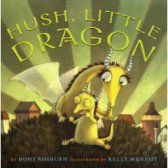
Here she comes with a fresh magician.
Don’t mind the tast
Blog: billkirkwrites (Login to Add to MyJacketFlap)
JacketFlap tags: rhyming, rhymes, billkirkwrites, Bill Kirk, Shakespear, M.C. Hammer, Add a tag
Anyone who has written in rhyme or attempted to do so, has likely struggled with the question of whether it is good enough---meaning good enough that someone other than the writer (or writer's mom) will like it. Will it be deemed to have sufficient appeal amongst the reading public to actually be published?
(Note to self: interesting how "public" and "published" have the same root, isn't it?).
But is the goodness (or shall we say "seriousness" of a rhyme, in terms of its quality) solely in the eye of the beholder? Or are there particular inherent characteristics of a rhyme itself that can be classified or measured---that give it legs; make it last?
Right off the bat, let's set aside the publication issue of goodness versus rightness. An editor's or a publisher's decision to go with a rhyme may have more to do with "fit" rather than how well the rhyme is written. In a short piece for a magazine, the rhyme has to be relevant to the theme. It must also target the appropriate age and be true to the magazine's mission and vision. If the monthly theme is airplanes, a rhyme about the anticipated trajectory of bouncing beach balls probably won't cut it, no matter how good the rhyme is.
So, for sake of argument, we will assume the rhyme flows smoothly, has no obvious speed bumps in its rhythm and that it may even have a surprise twist to get a chuckle or even a sardonic eye roll out of the editor or publisher. But use of rhythm and wit in rhyme is a different topic entirely. So, let's set it aside for the moment.
Instead this post is about goodness versus badness in rhyme solely in terms of rhyming words and line endings, AKA rhyme scheme. This will be mostly a structural discussion of perfect rhyme versus near rhyme and forced rhyme. In the words (pardon the pun) hammered home by one modern day bard (M.C. Hammer in "You Can't Touch This"), let's "break it down!"
GOOD (PERFECT) RHYME: So, what are editors and publishers looking for? Before jumping in, I should qualify this answer as being based on my own personal experience with rejection---no, not that kind of rejection; I mean by editors and publishers---and what they have told me from time to time that has helped me improve my rhyming game.
Generally, a good rhyme must... well... rhyme. And it must rhyme well. Near rhyme and forced rhyme are taboos which we will cover when we get to the "bad" stuff. Rhyme assumes that a set of rhyming words will follow a certain sequence. Rhyming sets come in pairs or fours or other groupings and can have either single (ray, say) or multiple (hatchet, ratchet) rhyming syllables. But in either case, the endings of the rhyming lines should sound the same. And the pattern of how the endings are used in the verse should be consistent.
In a Shakespearean Sonnet, for example, the rhyming scheme is laid out in three quatrains (four-line stanzas) and an ending couplet: abab cdcd efef gg. Following that rhyming scheme, in each stanza the first and third lines rhyme, the second and fourth lines rhyme and the last two lines (the couplet) rhyme. In "Mary Had A Little Lamb", disregarding the repeated lines (little lamb, little lamb, little lamb), only the second and fourth lines in each stanza rhyme (_a_a _b_b _c_c _d_d). And using this as a brazen attempt at self-promotion, a four-line rhyming scheme can be found in my rhyming picture book "There's A Spider In My Sink!" where all four lines in each stanza rhyme (aaaa bbbb cccc dddd, and so forth).
Regardless of the rhyming scheme you choose, just remember to keep your intended rhyming line endings sounding the same and your rhymes should be good except...
...when they're not.
BAD RHYME: Apart from problems with the content of a rhyme (flaky or shaky story, nonsensical verse that isn't otherwise interesting, funny or cute) and
Blog: billkirkwrites (Login to Add to MyJacketFlap)
JacketFlap tags: rhyming, gender, language, male, rhymes, female, linguistics, billkirkwrites, Bill Kirk, Add a tag
Just when you thought it was safe to break out your rhyming dictionary (or start running all your rhyming endings alphabetically through your head), someone tells you there's gender to contend with in the rhymes you write. What's up with that? After all, the last time you paid any attention to linguistic gender was Spanish class in the ninth grade---or was it when you ordered that beer during Spring Break in Puerto Vallarta?
No matter. The last place you thought gender would be an issue had to be rhyme, right? Well, fear not. It's not quite as problematic as you may anticipate. In fact, except that someone back in the day must have thought structural endings and sounds ought to be classified according to gender, it's unlikely that anyone would even notice. But just out of curiosity, it might be fun to try and sleuth out who among the ancients decided gender was important---and why.
So, where did the whole gender in rhyme thing originate? Did the early Chinese rhymers grapple with gender in their day? Although some of the oldest surviving Chinese poetry contains lyric aspects, because the written language is character based, any gender association to poetic form may be difficult to tease out. Left with that uncertainty, is the male-female poetic structure primarily western in origin? Could it simply be a non-functioning, vestigial "leftover" from Old Latin which etched its subtle tracks on the English language as romantic entanglements ebbed and flowed across Europe?
According to one source in the English Department at Carson-Newman College, (http://web.cn.edu/kwheeler/lit_terms_R.html) the word "rhyme" itself originates "from Old French, rime meaning 'series,' in turn adopted from Latin 'rithmus' and Greek 'rhythmos'." Given some of the other gender assignments in Greek and Latin, might we ascribe gender features to the rhyming verses penned by the early Greeks and Romans?
No doubt, the definition of gender in rhyme could probably be argued until the cows come home, with a break taken only for milking before the debate starts again. As is true with virtually any sorting out of why words in any language might be classified as masculine versus feminine, rhymes are no different. One thing seems clear: at least in English, gender in rhyme seems to have little or nothing to do with the gender rules found in some romance languages.
That is, whether a line of verse in English ends in an "a" or "o" or other gender laden vowel or consonant, doesn't really matter as much as it does in the Spanish language. And speaking of word endings, despite its compromise value in the Italian language, the use of a neutral vowel (such as the letter "i") at the end of the plural form of both masculine and feminine words is not a gender-driven issue in English rhyme. But you have to admire the logical recognition of not being able to sort out gender in groups.
In the French language, the definition suggests line ending words which end in "e" are feminine and those that don't are masculine. Some sources also refer to "e" endings and unaccented ending syllables as being weak. Although I was a French major in college, I'll leave the "why" of those "differences" to others who know far more about the origins of the French language and who don't mind getting their shins kicked.
Meanwhile, back at the ranch, although the reasoning might be debatable, the rules regarding gender in English rhyme are remarkably clear. According to the Collaborative International Dictionary of English, a female rhyme has a rhyming set in which the rhyming lines end in double-syllable words (ego, amigo). A male rhyme, on the other hand, is one where only the last syllable in the line endings agree (stand, demand). No doubt you have noticed the difference in where the stress is placed---keep reading.
The definitions are extended slightly in Brande and Cox (A Dictionary
Blog: Shelf-employed (Login to Add to MyJacketFlap)
JacketFlap tags: trees, Non-Fiction Monday, leaves, Advance Reader Copy, poetry, rhyming, book review, nonfiction, science, Add a tag

Salas, Laura Purdie. 2012. A Leaf Can Be ... . Illustrated by Violeta Dabija. Minneapolis: Millbrook.
Advance Reader Copy supplied by NetGalley.
What's better than a beautifully illustrated nonfiction picture book? One that can be used to delight preschoolers, introduce poetry, or present science concepts. A Leaf Can Be... does it all.
Introductory stanzas give way to descriptive phrases of a leaf's many uses and manifestations,
A leaf is a leaf -The font is simple and pleasing, like printing with a fine point gel pen.
a bit of a tree.
But when cool days come chasing,
it also can be a ...
Wind rider
Lake glider
Pile grower
Hill grow-er
The illustrations, depicting each thing that "a leaf can be," are nothing less than enchanting. Blue is the color that anchors this journey through seasons and locales - posing as the sky, a lake, a hint of frost, the rainwater gathered in the palm of a leaf. Though whimsically drawn, the trees, people and animals in Dabija's paintings are rendered in the colors of nature - not the muted colors of nature, but nature in its most vibrant, most spectacular displays. Her use of "speckling" gives each illustration a hint of magic or fancy.
Also included are:
- "Glossary"
- "Further Reading."
- "More About Leaves," in which each descriptive tree phrase used throughout the book is explained,
Mouth filler - leaves can be tasty! Apes, giraffes, insects and many other animals eat leaves. Humans do too. Have you eaten lettuce or spinach lately?Highly recommended. It's early in the year, but I think this will be a favorite!
Manufactured in the United States of America.
Check Laura Purdie Salas' site for a teaching guide and bookmarks, coming soon.
Due on shelves March 1, 2012. (You can request it now on NetGalley from Lerner Publishing. Don't read this one on a black and white reader!)
Blog: Shelf-employed (Login to Add to MyJacketFlap)
JacketFlap tags: nocturnal animals, rhyming, book review, dogs, trains, elephants, owls, storytime, quirky, E, Add a tag
My calendar's packed. I just returned from a trip. I'm in the midst of a class. I'm presenting at a forum this week. But wait, four great new picture books are sitting on my table waiting to be reviewed!
What to do? Do it Twitter-style! Here they are in 140 characters or less:
- Train Trip. Caswell. 2011.Hyperion. Cheerful and rhyming, a boy and a train bond during a trip. “Special treat. “Come on in!” “Sound the whistle?” Eager grin."
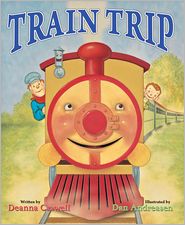
- Little Owl’s Night. Srinivasan. 2011. Viking. An owl observes the night’s activities. Dark colors, cheery wide-eyed creatures. Simple and serene.
- Shaggy Dogs, Waggy Dogs. Patricia Hubbell. 2011. Marshall Cavendish. Happy, rhyming, romping dogs. Dogs, dogs and more dogs! A storytime gem.

And one more of Willy, in case you didn't get enough!
 |
| ©Copyright Carll Cneut |
Blog: Shelf-employed (Login to Add to MyJacketFlap)
JacketFlap tags: history, rhyming, book review, nonfiction, inventions, Non-Fiction Monday, picture books for older readers, inventors, Add a tag
Cherise Mericle Harper is the author of the very popular Just Grace and Fashion Kitty series, as well as one of my personal favorites, Pink Me Up. In Imaginative Inventions, she turns her talented hand to nonfiction.
 In 3-6 paragraph rhymes, she features the history of fourteen inventions, including doughnuts, high-heeled shoes, eyeglasses and animal cookies. The "Piggy Bank" was a particularly interesting invention,
In 3-6 paragraph rhymes, she features the history of fourteen inventions, including doughnuts, high-heeled shoes, eyeglasses and animal cookies. The "Piggy Bank" was a particularly interesting invention,In the Middle Ages
pots were made from pygg.
It was an orange clay
that wasn't hard to dig.
When someone had some money
to save or hide away,
they kept it in their pygg jar
for a future rainy day.
Some potter probably said,
after giving it some thought,
"What if I take my fine pygg clay
and make a pig-shaped pot?"
Well, soon the other pottersHumorous, brightly-colored acrylic paintings accompany each entry, and are a mixture of folk art, caricature and comic styles. The double spread illustrations are framed on three sides by a quilt motif of related illustrations (shoes, doughnuts, etc.) and the fourth side has a border featuring facts - Who, Where, When, and more.
who formed and shaped the clay
were making jars in piggy shapes
just like they do today.
Sources are not included, however, Imaginative Inventions is not intended as a research tool, but more as a source of fun or an introduction to inventions. Many teachers assign projects on inventors. This would be a fun read-aloud to inspire further investigation.
Visit Cherise Mericle's great website!
(I can't wait to see her upcoming book If Waffles Were Like Boys - what a great title!)
Another review @ Rasco from RIF
Blog: Shelf-employed (Login to Add to MyJacketFlap)
JacketFlap tags: rhyming, confidence, book review, elementary school, cookies, fractured folktales, funny, E, school, Add a tag
 Many school-related picture books have arrived on my desk in the last week or two, but these are the only two I've really liked.
Many school-related picture books have arrived on my desk in the last week or two, but these are the only two I've really liked. Milgrim, David. 2011. Eddie Gets Ready for School. New York: Cartwheel (Scholastic).
David Milgrim has a real flair for simplicity. I've never reviewed them, but his Ready-to-Read books featuring Pip and Otto are my favorites for very early readers. Eddie Gets Ready for School is not an easy reader, but it's masterful in its simplicity. It's nothing more than a checked-off list, one or two items per page, of all the things Eddie "needs" to do before school,
Put cat in backpackSome items (Eddie choosing in turn, the dog, goldfish, bird, and flat screen TV for show & tell), don't make the written list and are expressed only in the crisply drawn cartoon images on white space. Mom and the dog are featured throughout the story. Mom is happy and supportive, although root beer and cartoons for breakfast does try her patience a bit. So what does Eddie finally choose for a snack and show & tell? You'll never guess! This is a very funny back-to-school gem!
Hug Mom
Take cat out of backpack
Find something else for show & tell
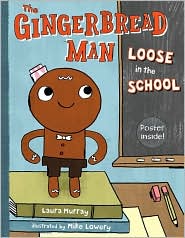
Murray, Laura. 2011. The Gingerbread Man Loose in the School. Ill. by Mike Lowery. New York: Putnam.
This gingerbread man is not running away as fast he can; he's running to catch up! The children have cooked him up at school but, oh no! He's left behind when it's time for recess, but he's a smart cookie. He'll find them,
I'll run and I'll run,Along the way, he loses a toe,
as fast as I can.
I can catch them! I'm their
Gingerbread Man!
I'll limp and I'll limp,and almost ends up as someone's snack,
as fast as I can. ...
I plopped on a sandwichThe story is told entirely in rhyme and presented comic style with panels and word bubbles. Cute and simple. Kids will eat this one up.
and chips with a crunch
OH NO! I cried out.
I'm in somebody's lunch!
Librarians will want to remove the poster before circulating this one. Teachers will want to hang it in the classroom.
Author Laura Murray's website has some great Gingerbread Man extras - and a RT script coming soon!
Blog: HOOK KIDS on READING (Login to Add to MyJacketFlap)
JacketFlap tags: Taconi and Claude, bonus. Ruthie, children's books, rhyming, FREE, Margot Finke, Tour, Horatio, Add a tag
*******************
Interviews and Reviews
+
My SPECIAL BONUS e-BOOK
FREE
to all who leave a comment + e-mail
( see below for details )
from . . .
Blog: Shelf-employed (Login to Add to MyJacketFlap)
JacketFlap tags: rhyming, imagination, book review, nonfiction, animals, colors, chickens, pigs, mothers, bedtime stories, storytime, E, participatory, Add a tag
I am in the midst of transferring from one branch to another, and I now have two desks overflowing with great new books! Here are a few:
That big (almost 2.5"), yellow, circular eye on the cover is actually a hole - an oh, the things we can spy through that hole! On a predominantly white spread with an eye on the left page and a circle of blue on the right, we read,
I spy with my little eye ... something that is blue. "I am the biggest animal in the world."Turn the page to find a richly colored blue whale, which due to some artfully placed curlicues, manages to appear realistic and at the same time, fanciful.
I'm a BLUE WHALE.Each featured animal unfolds in the same manner. The rear cover of the book features a hole for your own little eye to go spying! Colors, animals, guessing - this book has it all!
Edward Gibbs is listed as a "debut artist." What a debut! This one's dynamite!
Tusa, Tricia. 2011. Follow Me. Boston: Harcourt.
 From the book jacket, here is the description of the art,
From the book jacket, here is the description of the art, The illustrations in this book were done using an etching process with monoprinted color. The text type was set in Prin. The display type was set in Rats and Carrotflower.(Rats and Carrotflower? - love that one!) What this means to me is a softly-colored book with fanciful drawings outlined in etched brown lines. The color sometimes spills out of its intended (?) perimeter in much the same way that the young protagonist spills out of her swing and floats and flies through the breezes, "lost in small, green, happy music." She invites the reader to follow her through all of nature's colors, "deep into brown, into the bright white of yellow, into orange that slips into red." From the illustrator of In a Blue Room, another beautiful book!

Johnson, Lindsay Lee. 2011. Ten Moonstruck Piglets. Ill. by Carll Cneut. Boston: Clarion.
All in a scramble,It's all fun and games until the moon goes behind a cloud! But not to worry - Mama's coming. These sleepy-eyed, wrinkly little runts are irresistible!
all ready to gambol,
ten moonstruck piglets
on a midnight ramble.
Through the mud wallow,
beyond the wide hollow,
leapfrogging piglets
in turns lead and follow.
Where Ten Little Piglets is filled with amusing detail, this next book features uncomplicated simplicity ... (but in both books, you can count on mom to the rescue!)
Read more »
Blog: OUPblog (Login to Add to MyJacketFlap)
JacketFlap tags: Poetry, rhyming, Literature, Current Events, poem, twitter, national poetry month, William, win, oxford world's classics, terza rima, cinquain, stanza, oxford dictionary of literary terms, enter to win, twitter contest, tercet, *Featured, royal wedding, kate middleton, oupacademic, poetry challenge, envoi, stanzas, wills and kate, ballade, ghazal, types of poetry, msrv0s, Add a tag
Tweet
National Poetry Month, is nearing its end, and the royal wedding is just around the corner, so let’s write poems about it. I’ve made some suggestions below, but all forms are welcome. (If you really want to win me over, I suggest attempting my favorite poetic form, the sestina.) Send your poem care of [email protected] and I’ll post what I can tomorrow. (Keep it clean, please. Humor, satire and effusive excitement are welcome, insults are not.)
Additionally, our Twitter followers are eligible to win one of the below Oxford World’s Classics. To enter, tweet:
Take @OUPAcademic’s #royalweddingpoetrychallenge http://oxford.ly/msrv0S
Entries will be accepted all weekend. Winners will be contacted via DM.
* * * * *
ghazal (ghasel; gazal; ghazel) A short lyric poem written in couplets using a single rhyme (aa, ba, ca, da, etc.), sometimes mentioning the poet’s name in the last couplet. The ghazal is an important lyric form in Arabic, Persian, Turkish, and Urdu poetry, often providing the basis for popular love songs. Its usual subject-matter is amatory, although it has been adapted for religious, political, and other uses. Goethe and other German poets of the early 19th century wrote some imitations of the Persian ghazal, and the form has been adopted by a number of modern American poets, notably Adrienne Rich.
cinquain [sang-kayn] A verse stanza of five lines, more commonly known as a quintain. Examples of such stanzas include the English limerick, the Japanese tanka, and the Spanish quintilla; others include the variant ballad stanza employed intermittently by S. T. Coleridge in his ‘The Rime of the Ancient Mariner’ ( 1798 ), and many more varieties with no name.
terza rima [ter-tsă ree-mă] A verse form consisting of a sequence of interlinked tercets rhyming aba bcb cdc ded, etc. Thus the second line of eac
Blog: Galley Cat (Mediabistro) (Login to Add to MyJacketFlap)
JacketFlap tags: Children's Books, Celebrities, picture book, Poetry, rhyming, literacy, Dr. Seuss, Videos, social issues, Green Eggs and Ham, National Poetry Month, President Barack Obama, Add a tag
In honor of National Poetry Month, we’ve dug up a video of President Barack Obama reading a poetic Dr. Seuss story out loud.
As Obama prepared to read, he announced: “I am going to try to do the best rendition ever of Green Eggs and Ham.”
Do you think he accomplished his goal?
New Career Opportunities Daily: The best jobs in media.
Add a CommentBlog: Shelf-employed (Login to Add to MyJacketFlap)
JacketFlap tags: rhyming, book review, funny, storytime, wordless, immigrants, farms, metafiction, E, Add a tag
It's been a while since I've done a picture book roundup and they've been piling up on my desk. Here are a few new favorites:
Wordless and wonderful! Find out how Octopus escapes the chef's pot! Too funny!
(Look inside)

Yaccarino, Dan. 2011. All the Way to America: the Story of a Big Italian Family and a Little Shovel. New York: Knopf.
When Dan grew up, he married Helen. These are my grandparents. Together Dan and Helen opened a market. They sold all sorts of wonderful Italian food. Now the little shovel belonged to Dan, and he used it to measure out beans, macaroni, and olives.Dan Yaccarino's personal tale of immigration and tradition. A perfect introduction to genealogy, and a great choice for this summer's reading theme of One World, Many Stories.
Watt, Melanie. 2011. You're Finally Here! New York: Hyperion.
This hilarious book has been waiting for you, and it's about time you showed up!
Pfister, Marcus. 2011. Questions, Questions. New York: NorthSouth.
Simple, thoughtful and artistic. Guaranteed to elicit questions.
How do birds learn how to sing? What brings summer after spring? What turns leaves from green to brown and sends them floating gently down?Beaumont, Karen. 2011. No Sleep for the Sheep! Ill. by Jackie Urbanovic. New York: Harcourt.
Get ready for a long night -
In the big red barn on the farm, on the farm, in the big red1 Comments on April picture book roundup, last added: 4/6/2011Display Comments Add a Comment
Blog: Jean's Encouraging Words For Writers (Login to Add to MyJacketFlap)
JacketFlap tags: rhyming, picture books, Book Fairs, Add a tag
Oh, this book is way too funny! Kindergartners and first graders love this one, I'm sure. I bought Rhyming Dust Bunnies by Jan Thomas for my grandson. But I think I'm going to tuck it away on my own bookshelf and forget to send it home with him! The illustrations are bold, graphic, energetic and hilarious. The 221 words of text be-bop around the four expressive dust bunnies. The two components
Blog: Shelf-employed (Login to Add to MyJacketFlap)
JacketFlap tags: rhyming, book review, cats, chickens, funny, bedtime stories, storytime, quirky, metafiction, E, monters, Add a tag
Here are a few of my recent favorites - mostly silly
- Bardhan-Quallen, Sudipta. 2011. Chicks Run Wild. Ill. by Ward Jenkins. New York: Simon & Schuster.
Wings on hips, she warns those chicks, "No more games and no more tricks!"In the end, Mama beats them at their own game. The illustrations are bright and cheerful and funny. The chick in the over-sized black frame glasses is a riot all by himself!
One quick peck for each sweet child,
she slams the door . . .
those chicks run wild!
Illustrator, Ward Jenkins, offers a great preview and some bonus material on his site. Check it out!
- Czekaj, Jef. 2011. Cat Secrets. New York: Harper.
It has come to my attention that someone other than a cat may be reading this book.None but cats are allowed to read Cat Secrets!
Shame on you.
Hey, you! Yes, you! You don't look much like a cat!
Cat Secrets by Jef Czekaj -- Book Trailer from HarperTeen on Vimeo.
- Dormer, Frank W. 2010. Socksquatch. New York: Henry Holt.
Flowers tremble.with hilarious illustrations in a style reminiscent of your funniest grade school pal's drawings. Funny!
Trees quake.
Socksquatch lumbers.
...
Got sock?
And last, but certainly n
Blog: Shelf-employed (Login to Add to MyJacketFlap)
JacketFlap tags: poetry, rhyming, book review, counting, poems, funny, toddlers, storytime, nursery rhymes, guinea pigs, E, goats, Add a tag
Wood, Audrey and Don. 2010. Piggy Pie Po. Boston: Harcourt.
Three very short, rhyming pig stories, starring the absolutely adorable, Piggy Pie Po - each with a humorous ending.
But when he's ready for the tub, to splish and splash and rub-a-dub-dub, Piggy Pie Po wears no clothes ... only bubbles, head to toes.Irresistible!
Raczka, Bob. 2010. Guyku: A Year of Haiku for Boys. Ill. by Peter H. Reynolds. Boston: Houghton Mifflin.
Guyku (rhymes with haiku) - illustrated haiku that features boys and things that boys like to do outdoors in each season. My favorite?
Hey, Who turned off allBrilliant! Teachers should be all over this one.
the crickets? I'm not ready
for summer to end.
Wish there were one for girls (but "Galku" just wouldn't cut it)
Fox, Mem. 2010. Let's Count Goats. Ill. by Jan Thomas. New York: Beach Lane.
Here we see an over goat. And this one's going under. But can we count the crossing goats, terrified of thunder?Mem Fox, Jan Thomas, silly goats, what's not to like? Great counting book for little ones. (You don't see the word careering very often. Interesting choice.)
Mavor, Salley. 2010. Pocketful of Posies: A Treasury of Nursery Rhymes. Boston: Houghton Mifflin.
Traditional nursery rhymes illustrated in "hand-sewn fabric relief collages." Most of the rhymes are familiar - old classics including Peter, Peter Pumpkin Eater, The Old Woman Who Lived in a Shoe, and the like. But a few may be so old as to be new,
I'm dusty Bill from Vinegar Hill. Never had a bath and never will.The depictions of the exquisitely detailed needlework are simply stunning. Even a child who can't appreciate the work involved will know that this book is something special.
Share | 0 Comments on November picture book roundup as of 1/1/1900
Blog: Shelf-employed (Login to Add to MyJacketFlap)
JacketFlap tags: rhyming, book review, jazz, J, bilingual, musicians, E, rain forest, digital audiobook, Hispanic/Latino, Add a tag
“Choo-ka Choo-ka ting,” the Jazz Fly’s back!
He’s in the rainforest, selva, so it’s time to pack.
But ¡Ay, caramba! - the Bug Band’s swing
just doesn't make los termites sing.
So add Spanish words, a Latino beat.
Then those bugs start groovin’ in the southern heat,
proving jazz and Latin are a hoppin’ mix.
(Made all the better with Karen Hanke’s pix)
Let Matthew Gollub do the reading with the book’s CD.
Kids will love it. Es bueno. Check it out. You’ll see.
Listen to and see a preview of Jazz Fly 2 at Matthew Golub's site.
(The original Jazz Fly, is fly, too!)
Share |
Blog: HOMESPUN LIGHT (Login to Add to MyJacketFlap)
JacketFlap tags: babies, board books, review by Emily, rhyming, book review, picture books, favorites, Add a tag
Are you thinking about stocking stuffers yet? Here are some perfect ones for your littlest listeners! Today we're talking board books. Our current favorites are...Baby Baby Baby!
by Marilyn Janovitz
What do babies love more than...well, babies? This rhyming book is full of fun. Listen to the rhythm. It sounds like a song.
"Bitsy bouncy baby
On a bumpity lap
Mommy's little baby likes to
Clap Clap Clap!
Teeny tiny feet
Tippy toes prance
Daddy's little baby likes to
Dance Dance Dance!"
My little Y is really enjoying this story. He asks for it over and over, saying, "Baby Baby Baby boooook". It's pretty darn cute!
Another big plus for this book, is that it shows a traditional family, which is unfortunately becoming more and more unusual. It shows baby playing with mom, dad, Grandma, Grandpa, and the puppy and kitty.
Yay for family!Little Quack
by Lauren Thompson, illustrated by Derek Anderson
This is an endearing story about a duck who is afraid to leave his nest. The pictures are adorable, and the story even throws in some counting. You can't beat this cute story.
Here's a glimpse into the book: "Come, little duckling!" Mama called once more. "Paddle on the water with me."
"No, Mama, no!" cried Little Quack. "I'm scared! I'm just too scared!"
"You can do it," Mama said.
Little Quack looked at the water. He sniffed the water. He touched the water with his foot. Could he do it? Did he dare?"
Find out in the story. :)
2 Comments on Favorite Board Books, last added: 10/27/2010
View Next 25 Posts






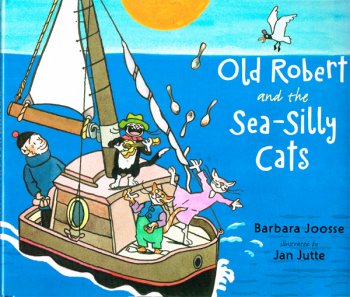

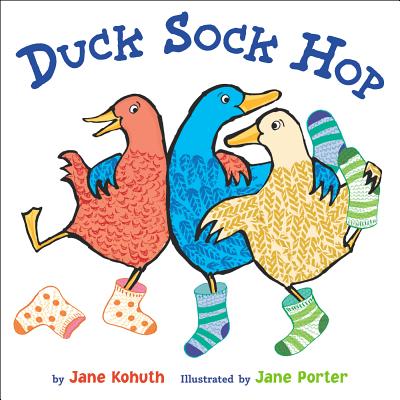








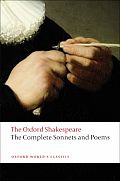
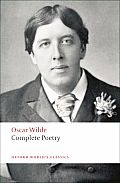

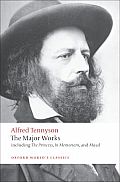



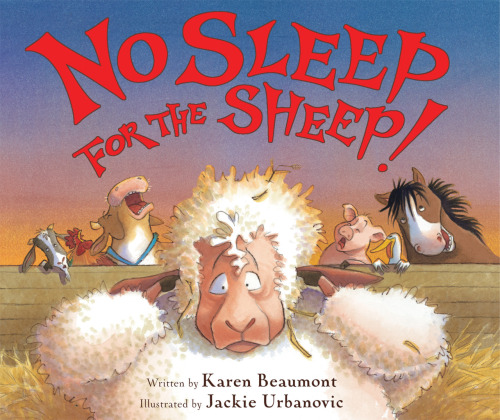






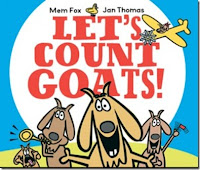




keep blogging, do dishes in the morning!
pat is the cat with the most and ever a gracious host, he like the rhyme when his comment box you chime good thing neither is a crime...lol
oh oh
where did my words go
oh oh
Love the rhymes!
Kisses
Nellie
There are spooks
in my yard
I keep on
my guard
The ghosts all in white
can cause quite a fright
When sun come up and shines on my feet.
I see in my yard a lonely white sheet.
Here's what I think...
Leave dishes in sink!
Finding a rhyme
Can take a bit of time
But giving you kudos
Is better than noodles!
:-)
Leave the dishes alone
And pick up the phone
Call in a maid
So the dishes will fade
Then on blogger you can stay
With such a rhyming display
These comments are great
but one thing I hate
is having to rhyme
when I've run out of time!
xx
Rhyme?
Sublime.
Fun :) leave the dishes in the sink :)
Wow...these are awesome
Oh...I need to rhyme
So these are pawsome!
Someone else will wash dishes?
Oh, how I wishes!
I like your wishes
For me no dishes!
I had to come along today,
this blog looks so appealing.
Now I want to read and play,
not soon will I be leaving?
That's just silly! I'm so sorry,
I'm quite chilly, not to worry.
Oh dear me, I can't stop,
Rhyme after ryhmn I just drop!
Somebody stop me, before it's too late,
I can't break free, from this rhyming fate!
Oh, what have you started, Jan?!
You test my powers to the limit,
your poem is fine -- exquisite!
Looking at the sunshine is definitely my funtime...:)
I have been following Pat for some time now and have enjoyed his postings ~
You can do them in between..he..he..